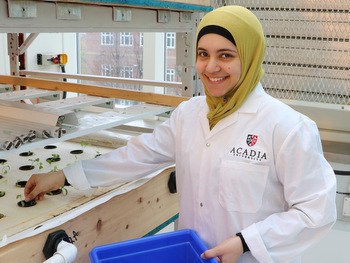
Background
As the global population increases, demand is also increasing for food production methods that involve efficient use of resources and do not require large expanses of arable land. Aquaponics is a method that incorporates growing crops under soilless conditions (hydroponics) in addition to raising fish within the same system (aquaculture). Aquaponic systems are designed such that both the fish and plants utilize the nitrogen entering the system from fish food. The water circulation within the systems contributes to its more efficient use compared to traditional crop farming. The need for other resources, such as soil or chemical fertilizers, is also eliminated.
Description of Aquaponics system
The two major components of the aquaponics system are a fish tank and a unit with three levels for planting crops. Prior to the nitrogen-rich wastewater from the fish tank reaching the plants, the water is filtered and bacteria converts the present ammonia to nitrate to be utilized by the plants.
Fish species
The species chosen for incorporation in the aquaponics system is freshwater crayfish. The use of crayfish is not as widespread as other species in aquaponics; therefore, it offers an opportunity to explore the effect on plant growth and nutrient content in the system using a species that is not as extensively researched in this area.
Vegetables grown
Various vegetables are being grown as part of this study, including lettuce, swiss chard, and kale. Prior to introduction of plants into the aquaponics system, seed germination was completed using HPS and LED lighting systems.


 Acadia University
Acadia University